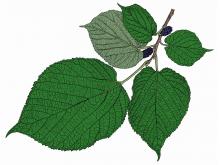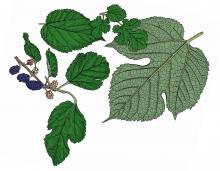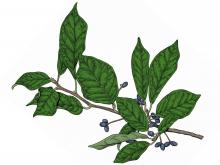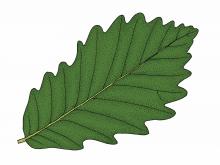Trees, Shrubs and Woody Vines
Media

Species Types
Scientific Name
Tilia americana
Description
American basswood is a common shade tree planted in lawns, parks, and along city streets. Recognize it by its leaf shape and texture, and by the unusual strap-shaped, reduced leaf attached to the clusters of small flowers.
Media

Species Types
Scientific Name
Juglans nigra
Description
Easily Missouri’s most valuable tree, the black walnut provides the finest wood in the world, as well as delicious nuts. Both are in high demand and thus form an important part of Missouri’s economy.
Media

Species Types
Scientific Name
Carya illinoinensis
Description
The pecan, a type of hickory, is one of Missouri’s favorite nut trees. Originally pecan had a fairly limited, southern distribution, but today it is found in and out of cultivation nearly statewide, owing to the popularity of the nuts.
Media

Species Types
Scientific Name
Juglans cinerea
Description
Butternut, or white walnut, is closely related to the more common black walnut. Both have delicious edible nuts, and both are valued for their wood. Butternut, however, is declining due to a usually fatal fungal disease.
Media

Species Types
Scientific Name
Morus rubra
Description
Red mulberry is native to Missouri and North America. You can distinguish it from the introduced white mulberry tree, which is a noxious weed, by its leaves and fruits.
Media

Species Types
Scientific Name
Morus alba
Description
White mulberry was introduced from Asia for its berries and as fodder for an attempted silkworm industry. Birds have helped spread white mulberry so much that in many places it is more common than our native red mulberry.
Media

Species Types
Scientific Name
Nyssa sylvatica
Description
A close relative of water tupelo, black gum is very popular as a landscaping tree. In the wild, it’s usually found in the Ozarks and Bootheel, but with its high popularity in landscaping, you might find it anywhere in the state.
Media

Species Types
Scientific Name
Celtis occidentalis
Description
Common hackberry is named for its sweet, purple, edible fruits, but most people identify hackberry with its weird-looking bark, which develops numerous corky, wartlike projections and ridges.
Media

Species Types
Scientific Name
Quercus michauxii
Description
Swamp chestnut oak grows in Missouri's Bootheel swamps. The leaves look something like those of true chestnut trees.
Media

Species Types
Scientific Name
Asimina triloba
Description
“Way down yonder in the pawpaw patch” is an old song you might be familiar with — but today, surprisingly few Missourians know a pawpaw tree when they see one. This is a good tree to know, especially when the large, sweet fruit are ripening!
See Also
About Trees, Shrubs and Woody Vines in Missouri
There are no sharp dividing lines between trees, shrubs, and woody vines, or even between woody and nonwoody plants. “Wood” is a type of tissue made of cellulose and lignin that many plants develop as they mature — whether they are “woody” or not. Trees are woody plants over 13 feet tall with a single trunk. Shrubs are less than 13 feet tall, with multiple stems. Vines require support or else sprawl over the ground.





















